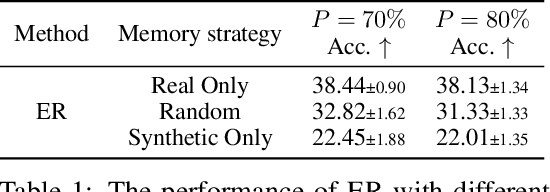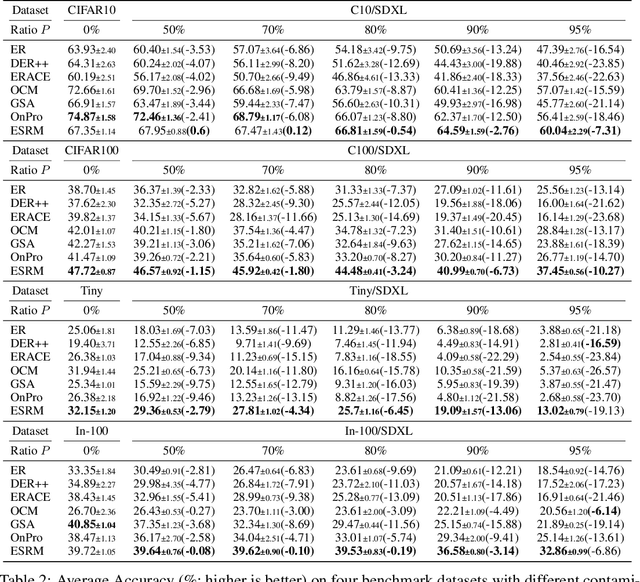Toshihiko Yamasaki
Robust Deepfake Detection for Electronic Know Your Customer Systems Using Registered Images
Jul 30, 2025Abstract:In this paper, we present a deepfake detection algorithm specifically designed for electronic Know Your Customer (eKYC) systems. To ensure the reliability of eKYC systems against deepfake attacks, it is essential to develop a robust deepfake detector capable of identifying both face swapping and face reenactment, while also being robust to image degradation. We address these challenges through three key contributions: (1)~Our approach evaluates the video's authenticity by detecting temporal inconsistencies in identity vectors extracted by face recognition models, leading to comprehensive detection of both face swapping and face reenactment. (2)~In addition to processing video input, the algorithm utilizes a registered image (assumed to be genuine) to calculate identity discrepancies between the input video and the registered image, significantly improving detection accuracy. (3)~We find that employing a face feature extractor trained on a larger dataset enhances both detection performance and robustness against image degradation. Our experimental results show that our proposed method accurately detects both face swapping and face reenactment comprehensively and is robust against various forms of unseen image degradation. Our source code is publicly available https://github.com/TaikiMiyagawa/DeepfakeDetection4eKYC.
Adversarially Pretrained Transformers may be Universally Robust In-Context Learners
May 20, 2025Abstract:Adversarial training is one of the most effective adversarial defenses, but it incurs a high computational cost. In this study, we show that transformers adversarially pretrained on diverse tasks can serve as robust foundation models and eliminate the need for adversarial training in downstream tasks. Specifically, we theoretically demonstrate that through in-context learning, a single adversarially pretrained transformer can robustly generalize to multiple unseen tasks without any additional training, i.e., without any parameter updates. This robustness stems from the model's focus on robust features and its resistance to attacks that exploit non-predictive features. Besides these positive findings, we also identify several limitations. Under certain conditions (though unrealistic), no universally robust single-layer transformers exist. Moreover, robust transformers exhibit an accuracy--robustness trade-off and require a large number of in-context demonstrations. The code is available at https://github.com/s-kumano/universally-robust-in-context-learner.
Adversarial Training from Mean Field Perspective
May 20, 2025Abstract:Although adversarial training is known to be effective against adversarial examples, training dynamics are not well understood. In this study, we present the first theoretical analysis of adversarial training in random deep neural networks without any assumptions on data distributions. We introduce a new theoretical framework based on mean field theory, which addresses the limitations of existing mean field-based approaches. Based on this framework, we derive (empirically tight) upper bounds of $\ell_q$ norm-based adversarial loss with $\ell_p$ norm-based adversarial examples for various values of $p$ and $q$. Moreover, we prove that networks without shortcuts are generally not adversarially trainable and that adversarial training reduces network capacity. We also show that network width alleviates these issues. Furthermore, we present the various impacts of the input and output dimensions on the upper bounds and time evolution of the weight variance.
MobileCity: An Efficient Framework for Large-Scale Urban Behavior Simulation
Apr 18, 2025Abstract:Generative agents offer promising capabilities for simulating realistic urban behaviors. However, existing methods oversimplify transportation choices in modern cities, and require prohibitive computational resources for large-scale population simulation. To address these limitations, we first present a virtual city that features multiple functional buildings and transportation modes. Then, we conduct extensive surveys to model behavioral choices and mobility preferences among population groups. Building on these insights, we introduce a simulation framework that captures the complexity of urban mobility while remaining scalable, enabling the simulation of over 4,000 agents. To assess the realism of the generated behaviors, we perform a series of micro and macro-level analyses. Beyond mere performance comparison, we explore insightful experiments, such as predicting crowd density from movement patterns and identifying trends in vehicle preferences across agent demographics.
LLM-Advisor: An LLM Benchmark for Cost-efficient Path Planning across Multiple Terrains
Mar 03, 2025Abstract:Multi-terrain cost-efficient path planning is a crucial task in robot navigation, requiring the identification of a path from the start to the goal that not only avoids obstacles but also minimizes travel costs. This is especially crucial for real-world applications where robots need to navigate diverse terrains in outdoor environments, where recharging or refueling is difficult. However, there is very limited research on this topic. In this paper, we develop a prompt-based approach, LLM-Advisor, which leverages large language models (LLMs) as effective advisors for path planning. The LLM-Advisor selectively provides suggestions, demonstrating its ability to recognize when no modifications are necessary. When suggestions are made, 70.59% of the paths suggested for the A* algorithm, 69.47% for the RRT* algorithm, and 78.70% for the LLM-A* algorithm achieve greater cost efficiency. Since LLM-Advisor may occasionally lack common sense in their suggestions, we propose two hallucination-mitigation strategies. Furthermore, we experimentally verified that GPT-4o performs poorly in zero-shot path planning, even when terrain descriptions are clearly provided, demonstrating its low spatial awareness. We also experimentally demonstrate that using an LLM as an advisor is more effective than directly integrating it into the path-planning loop. Since LLMs may generate hallucinations, using LLMs in the loop of a search-based method (such as A*) may lead to a higher number of failed paths, demonstrating that our proposed LLM-Advisor is a better choice.
Joint Fusion and Encoding: Advancing Multimodal Retrieval from the Ground Up
Feb 27, 2025Abstract:Information retrieval is indispensable for today's Internet applications, yet traditional semantic matching techniques often fall short in capturing the fine-grained cross-modal interactions required for complex queries. Although late-fusion two-tower architectures attempt to bridge this gap by independently encoding visual and textual data before merging them at a high level, they frequently overlook the subtle interplay essential for comprehensive understanding. In this work, we rigorously assess these limitations and introduce a unified retrieval framework that fuses visual and textual cues from the ground up, enabling early cross-modal interactions for enhancing context interpretation. Through a two-stage training process--comprising post-training adaptation followed by instruction tuning--we adapt MLLMs as retrievers using a simple one-tower architecture. Our approach outperforms conventional methods across diverse retrieval scenarios, particularly when processing complex multi-modal inputs. Notably, the joint fusion encoder yields greater improvements on tasks that require modality fusion compared to those that do not, underscoring the transformative potential of early integration strategies and pointing toward a promising direction for contextually aware and effective information retrieval.
Online Prototypes and Class-Wise Hypergradients for Online Continual Learning with Pre-Trained Models
Feb 26, 2025Abstract:Continual Learning (CL) addresses the problem of learning from a data sequence where the distribution changes over time. Recently, efficient solutions leveraging Pre-Trained Models (PTM) have been widely explored in the offline CL (offCL) scenario, where the data corresponding to each incremental task is known beforehand and can be seen multiple times. However, such solutions often rely on 1) prior knowledge regarding task changes and 2) hyper-parameter search, particularly regarding the learning rate. Both assumptions remain unavailable in online CL (onCL) scenarios, where incoming data distribution is unknown and the model can observe each datum only once. Therefore, existing offCL strategies fall largely behind performance-wise in onCL, with some proving difficult or impossible to adapt to the online scenario. In this paper, we tackle both problems by leveraging Online Prototypes (OP) and Class-Wise Hypergradients (CWH). OP leverages stable output representations of PTM by updating its value on the fly to act as replay samples without requiring task boundaries or storing past data. CWH learns class-dependent gradient coefficients during training to improve over sub-optimal learning rates. We show through experiments that both introduced strategies allow for a consistent gain in accuracy when integrated with existing approaches. We will make the code fully available upon acceptance.
Training Data Synthesis with Difficulty Controlled Diffusion Model
Nov 27, 2024



Abstract:Semi-supervised learning (SSL) can improve model performance by leveraging unlabeled images, which can be collected from public image sources with low costs. In recent years, synthetic images have become increasingly common in public image sources due to rapid advances in generative models. Therefore, it is becoming inevitable to include existing synthetic images in the unlabeled data for SSL. How this kind of contamination will affect SSL remains unexplored. In this paper, we introduce a new task, Real-Synthetic Hybrid SSL (RS-SSL), to investigate the impact of unlabeled data contaminated by synthetic images for SSL. First, we set up a new RS-SSL benchmark to evaluate current SSL methods and found they struggled to improve by unlabeled synthetic images, sometimes even negatively affected. To this end, we propose RSMatch, a novel SSL method specifically designed to handle the challenges of RS-SSL. RSMatch effectively identifies unlabeled synthetic data and further utilizes them for improvement. Extensive experimental results show that RSMatch can transfer synthetic unlabeled data from `obstacles' to `resources.' The effectiveness is further verified through ablation studies and visualization.
Reward Incremental Learning in Text-to-Image Generation
Nov 26, 2024Abstract:The recent success of denoising diffusion models has significantly advanced text-to-image generation. While these large-scale pretrained models show excellent performance in general image synthesis, downstream objectives often require fine-tuning to meet specific criteria such as aesthetics or human preference. Reward gradient-based strategies are promising in this context, yet existing methods are limited to single-reward tasks, restricting their applicability in real-world scenarios that demand adapting to multiple objectives introduced incrementally over time. In this paper, we first define this more realistic and unexplored problem, termed Reward Incremental Learning (RIL), where models are desired to adapt to multiple downstream objectives incrementally. Additionally, while the models adapt to the ever-emerging new objectives, we observe a unique form of catastrophic forgetting in diffusion model fine-tuning, affecting both metric-wise and visual structure-wise image quality. To address this catastrophic forgetting challenge, we propose Reward Incremental Distillation (RID), a method that mitigates forgetting with minimal computational overhead, enabling stable performance across sequential reward tasks. The experimental results demonstrate the efficacy of RID in achieving consistent, high-quality generation in RIL scenarios. The source code of our work will be publicly available upon acceptance.
Dealing with Synthetic Data Contamination in Online Continual Learning
Nov 21, 2024



Abstract:Image generation has shown remarkable results in generating high-fidelity realistic images, in particular with the advancement of diffusion-based models. However, the prevalence of AI-generated images may have side effects for the machine learning community that are not clearly identified. Meanwhile, the success of deep learning in computer vision is driven by the massive dataset collected on the Internet. The extensive quantity of synthetic data being added to the Internet would become an obstacle for future researchers to collect "clean" datasets without AI-generated content. Prior research has shown that using datasets contaminated by synthetic images may result in performance degradation when used for training. In this paper, we investigate the potential impact of contaminated datasets on Online Continual Learning (CL) research. We experimentally show that contaminated datasets might hinder the training of existing online CL methods. Also, we propose Entropy Selection with Real-synthetic similarity Maximization (ESRM), a method to alleviate the performance deterioration caused by synthetic images when training online CL models. Experiments show that our method can significantly alleviate performance deterioration, especially when the contamination is severe. For reproducibility, the source code of our work is available at https://github.com/maorong-wang/ESRM.
 Add to Chrome
Add to Chrome Add to Firefox
Add to Firefox Add to Edge
Add to Edge